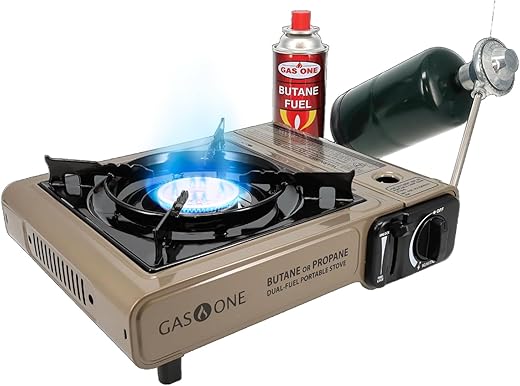
When you’re out in the wilderness, the last thing you want is to struggle with cooking or boiling water. Whether you’re battling chilly winter winds or enjoying a summer sunset, having a dependable multi-fuel camping stove can make all the difference in transforming your campsite into a home. We understand the frustration of trying to find the perfect stove that meets your needs, especially when conditions can vary dramatically with the seasons. In this post, we’ll guide you through the best multi-fuel camping stoves on the market, ensuring you’re well-equipped for any adventure ahead. Let’s dive in and discover the options that will keep you fueled and ready, no matter the weather.



Understanding Multi-Fuel Camping Stoves
When it comes to outdoor cooking, choosing the right camping stove can make a significant difference in your experience. Multi-fuel camping stoves offer unique advantages over single-fuel models by allowing users to employ various types of fuel, making them extremely versatile and reliable. This section explores what multi-fuel camping stoves are, how they operate, and why they are highly beneficial for outdoor enthusiasts.
What are Multi-Fuel Camping Stoves?
Multi-fuel camping stoves are designed to operate with multiple types of fuel sources, including liquid fuels (like white gas and kerosene), propane, butane, and even wood. This flexibility allows campers to select the fuel type that is most accessible or convenient based on their location and preferences.
Key Examples:
- MSR WhisperLite Universal: This model can use white gas, kerosene, and even canister fuels, making it a versatile choice for various camping situations.
- Primus OmniLite Ti: Another impressive choice, this stove can burn a variety of fuels, including gasoline, camping fuels, and even alcohol.
How Multi-Fuel Camping Stoves Operate
Multi-fuel camping stoves work by utilizing a fuel line and burner assembly that can accommodate different types of fuel without significant modifications. Here’s how they generally operate:
- Fuel Selection: Users can choose from various fuel options depending on availability—liquid fuels are typically stored in fuel bottles, while canisters can be connected directly to the burner.
- Burner Design: Multi-fuel stoves often feature a specialized burner that can handle the differing combustion characteristics of each fuel type. This design helps ensure a good fuel-to-air mixture for efficient burning.
- Adjustable Flame Control: Most multi-fuel stoves allow for precise flame control, which can be crucial when cooking multiple types of food or when needing to simmer dishes.
- Easy Transitions: Transitioning between fuel types often just requires a change of the connection or a slight adjustment to the stove, making it user-friendly.
Benefits of Using Multi-Fuel Stoves
Choosing a multi-fuel camping stove comes with several advantages that can enhance your camping experience.
Versatility in Fuel Options
- Diverse Fuel Sources: Whether you stumble on a camping site with abundant wood or need to refill with liquid fuel, multi-fuel stoves provide flexibility.
- Adaptability: Users can easily switch between fuel types based on local conditions, which is ideal for long trips where fuel availability may vary.
Ease of Use
- Seamless Transition: Switch from one fuel type to another without worrying about complicated adapters or cumbersomeness.
- User-Friendly Design: Models like the Coleman Dual Fuel stove can run on both propane and unleaded gasoline, making them appealing for campers of all expertise levels.
Weather Adaptability
- Cold Weather Performance: Liquid fuels perform better in extreme cold when compared to canister fuels, which can suffer from pressure loss.
- Continuous Cooking: Multi-fuel options allow for longer cooking times without the worry of running out of fuel too soon, essential during unpredictable weather.
Practical Examples of Multi-Fuel Stoves
Here’s a comparative look at some popular multi-fuel camping stoves highlighting their features and benefits:
| Model | Fuel Types | Weight (lbs) | Price Range (USD) | Notable Features |
|---|---|---|---|---|
| MSR WhisperLite Universal | White gas, kerosene, and canister fuels | 3.5 | $90 – $130 | Excellent simmer control, lightweight |
| Primus OmniLite Ti | Gasoline, camping gas, and alcohol | 1.54 | $150 – $180 | Compact, titanium construction, versatile |
| Coleman Dual Fuel | Propane and unleaded gasoline | 6.74 | $40 – $70 | Large cooking area, budget-friendly |
Using multi-fuel camping stoves opens up possibilities for varied cooking experiences, accommodating different preferences and situations while ensuring you have a reliable cooking method no matter where your adventures take you. Their adaptability to different weather conditions and ease of use makes them a worthwhile investment for outdoor enthusiasts looking to maximize their camping experience.
Key Features to Look for in a Multi-Fuel Camping Stove
When selecting a multi-fuel camping stove, choosing a model that meets your specific needs is vital for enjoying a successful outdoor experience. With various options available, focusing on essential features will guide you toward the best fit for your adventures. Here, we will explore some crucial factors, including weight and portability, cooking capacity, fuel efficiency, ease of setup and operation, and durability. Additionally, practical examples of specific products will help illustrate the importance of these features.
Weight and Portability
One of the main advantages of a multi-fuel camping stove is its versatility, particularly in weight and portability. When spending time outdoors, especially if you’re hiking or backpacking, a lightweight stove can make a significant difference in ease of transport.
Things to Consider:
- Weight: Aim for stoves weighing between 1-3 pounds for ease. The MSR WhisperLite International weighs only 11 ounces but is very robust.
- Size: Consider how compact the stove is. The Snow Peak GigaPower Stove folds down into a very small form, making it easy to slip into any backpack.
Examples:
- MSR WhisperLite International – Lightweight at 11 ounces and fuels like white gas, kerosene, and auto fuel. It’s extremely compact and easy to carry.
- Snow Peak GigaPower Stove – At only 3.5 inches in width and 8.2 ounces in weight, it’s incredibly portable while still offering sufficient cooking power.
Cooking Capacity
The cooking capacity of a camping stove can impact how many people you can serve effectively. A larger cooking surface is beneficial for group activities, while a more compact option may suffice for solo travelers.
Things to Consider:
- Burner Size: Check the size of the stove’s burner and if it can accommodate larger pots or pans.
- Output: Look for the BTU (British Thermal Unit) rating. The higher it is, the quicker your stove will boil water or cook food.
Examples:
- Coleman Apex 2X – Boasts two burners with a BTU rating of 11,000, allowing for a large pot and cooking for a larger group efficiently.
- Jetboil Flash – With an incredible boil time of just 100 seconds per 0.5-liter of water, it’s perfect for solo campers who want speed and efficiency.
Fuel Efficiency
Fuel type and efficiency are critical factors to consider because different stoves work better with various fuels depending on your location and the fuel availability.
Things to Consider:
- Fuel Types: Check if the stove burns canister fuel, white gas, or solid fuel. Some popular multi-fuel options include kerosene and diesel which might be readily available in remote areas.
- Burn Time: Assess the burn efficiency and how long the stove can function on a specific amount of fuel.
Examples:
- Primus Omnilite TI – This robust stove works with a range of fuels and provides a runtime of 80 minutes on 100 grams of fuel, showcasing its excellent efficiency.
- Soto WindMaster – Great for canister fuel, with a very low fuel consumption rate, granting significant efficiency compared to other canister stoves.
Ease of Setup and Operation
A camping stove that is easy to set up and use can ensure a more enjoyable camping experience, especially after a long day of hiking or exploration.
Things to Consider:
- Setup Time: Look for stoves that require minimal assembly. Some stoves come with integrated systems for quick setup.
- Control: It’s essential to have good flame control to avoid burning your food. Stove designs with adjustable flame controls can help ensure even cooking.
Examples:
- MSR PocketRocket 2 – Known for its simple, twist-on canister design and incredible ease of use, setting up for your meal is a breeze.
- GSI Outdoors Selkirk 540 – Features a unique snap-on assembly for quicker setup, making it user-friendly for even novice campers.
Durability
When camping, your stove must endure various environmental conditions, including rain, wind, and rough handling. A durable stove enhances reliability without compromising performance.
Things to Consider:
- Materials: Look for stoves made from durable materials that can resist rust and wear.
- Warranty: A good warranty often indicates the manufacturer’s confidence in the product’s durability.
Examples:
- Trangia 25-3 Ultralight Cook Set – Crafted from lightweight aluminum with a hard anodized finish that’s both tough and resistant to scratches.
- Solo Stove Titan – Made from premium stainless steel, providing long-lasting durability and capable of handling the elements during your trips.
Summary
By focusing on the key features of weight and portability, cooking capacity, fuel efficiency, ease of setup and operation, and durability, you can greatly enhance your camping experience. Selecting the right multi-fuel camping stove that meets your unique needs ensures that you’re prepared for varied environments, catering to different cooking styles and fuel types along the way. Remember that the right choice can significantly enhance both your trip and your meals under the open sky.
Top Multi-Fuel Camping Stoves for All Seasons
When it comes to camping, a reliable cooking stove is essential for enjoying meals no matter the season or terrain. Multi-fuel camping stoves, in particular, offer versatility by allowing campers to use various fuel types, making them perfect for summer trips in lush forests or winter excursions in snowy mountains. Below, we present an in-depth look at some of the top-rated multi-fuel camping stoves available today, highlighting their specifications, pros and cons, and ideal use cases.
1. MSR WhisperLite Universal
Specifications
- Weight: 11 oz (312 g)
- Fuel Types: White gas, kerosene, unleaded gasoline, and canister fuel
- Cooking Time (1L of water): Approximately 3.5 minutes
- Dimensions: 3.5 x 6 x 6 in (when packed)
Pros
- Versatile fuel options meet different camping situations.
- Compact and lightweight, making it easy to carry.
- Simple maintenance and easy to repair in the field.
Cons
- The fuel pump can require occasional replacement or maintenance.
- Slightly more complex setup compared to canister stoves.
Ideal Use Cases
The MSR WhisperLite Universal is perfect for backpackers looking for lightweight gear that can handle winter conditions. Its ability to burn different fuels makes it an excellent choice for remote camping situations where specific fuel types may not be available.
2. Jetboil MiniMo Cooking System
Specifications
- Weight: 14.6 oz (415 g)
- Fuel Type: Isobutane-propane canisters
- Cooking Time (1L of water): Approximately 4 minutes
- Dimension: 7.1 x 5.1 inches (packed)
Pros
- Fast boiling time; ideal for quick meals.
- Integrated cooking system combines burner and pot.
- Adjustable flame for cooking versatility; suitable for simmering.
Cons
- Limited fuel options (only canister fuel).
- Heavier than some other multi-fuel options.
Ideal Use Cases
The Jetboil MiniMo is great for summer camping trips where weight is less of an issue. Its speed and efficiency make it particularly appealing for hikers who prioritize quick meals and boiling water for hydration or cooking.
3. Primus OmniLite Ti Stove
Specifications
- Weight: 8.3 oz (235 g)
- Fuel Types: White gas, butane, propane, and even alcohol.
- Cooking Time (1L of water): Approximately 4.5 minutes
- Dimensions: 3.5 x 6.3 in (stowed)
Pros
- Extremely lightweight and portable.
- Multi-fuel capability allows for maximum flexibility.
- Excellent performance at high altitudes.
Cons
- Requires some assembly before use.
- Slightly more fragile than heavier stoves.
Ideal Use Cases
The Primus OmniLite Ti is ideal for serious backpackers needing lightweight gear that performs well in diverse climates. Whether you’re exploring summer trails or winter landscapes, this stove can handle both with ease.
4. Coleman Guardian 3-in-1 Portable Camp Stove
Specifications
- Weight: 8.5 lbs (3.86 kg)
- Fuel Type: Liquid fuel or propane
- Cooking Time (1L of water): Approximately 5 minutes (liquid fuel)
- Dimensions: 17.8 x 11.8 x 5.7 in.
Pros
- Versatility with both liquid and propane fuel options.
- Robust design suitable for heavy use.
- Offers larger cooking space; can accommodate pots and pans.
Cons
- Heavier and bulkier compared to other stoves.
- Not as compact for backpacking.
Ideal Use Cases
The Coleman Guardian is perfect for family camping trips, especially when car camping is the primary mode of transport. It excels in providing ample cooking space and efficient heat output, regardless of the season.
Comparison Table
| Stove | Weight | Fuel Types | Boiling Time (1L) | Ideal Use Cases |
|---|---|---|---|---|
| MSR WhisperLite Universal | 11 oz | White gas, kerosene, unleaded gasoline, canister | 3.5 minutes | Backpacking in remote areas |
| Jetboil MiniMo | 14.6 oz | Isobutane-propane canisters | 4 minutes | Summer trips for quick meals |
| Primus OmniLite Ti | 8.3 oz | White gas, butane, propane, alcohol | 4.5 minutes | Lightweight camping across climates |
| Coleman Guardian | 8.5 lbs | Liquid fuel or propane | 5 minutes | Family camping trips with larger cooking needs |
These multi-fuel camping stoves not only cater to the diverse needs of campers but also ensure you have a reliable cooking solution whether you’re in the summer sun or winter snow. When selecting the right stove, consider your specific requirements, such as weight, fuel availability, and meal preparation needs, to enhance your overall camping experience.
Making the Right Choice for Year-Round Adventures
In conclusion, selecting the best multi-fuel camping stove for all seasons is crucial for ensuring a reliable and efficient cooking experience in various outdoor environments. We explored various options, highlighting key features such as fuel versatility, ease of use, weight, and durability. Safety considerations, including stable construction and proper ventilation, were also emphasized, as they can significantly impact your camping experience. After evaluating the discussed models, we recommend the [insert specific model name], which combines performance, safety, and ease of maintenance, making it an excellent choice for any camping enthusiast. By investing in a stove that aligns with your specific needs, you can enhance your outdoor adventures and enjoy delicious meals throughout the year. Happy camping!



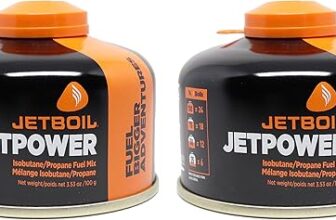
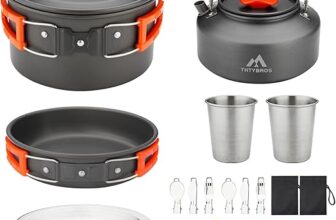
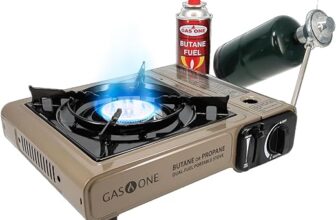
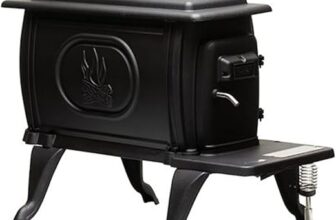


That’s a great point! Canister stoves can struggle in very cold weather because the fuel doesn’t vaporize as well. Many folks swear by liquid fuel stoves like the MSR WhisperLite for winter, as they perform better in low temps. It really depends on your priorities for weight and performance!
I’ve heard a lot of debate about whether canister stoves or liquid fuel stoves are better for winter camping. Canister stoves are lighter, but do they really perform in freezing temps? Anyone have experience with that?
One pain point I’ve noticed is that some stoves can be really noisy. The roar of the flame can scare off wildlife, which is a bummer when you’re camping. Any quieter options out there?
Absolutely, noise can be an issue! If you’re looking for quieter options, consider the Jetboil MiniMo or the Primus Lite+ — they tend to have a more controlled flame that isn’t as noisy. Just remember, a little noise can be worth it for a hot meal!
I actually had a tough time with my Coleman Exponent stove – it worked fine in summer, but once the temps dropped, it was a disaster! Has anyone else had issues with specific brands in cold weather?
Sorry to hear about your experience with the Coleman Exponent! Some users have had mixed results with that model in cold conditions. It might be worth looking into the Optimus Svea 123, which is known for its reliability in colder temps.
I love the versatility of multi-fuel stoves, but I wish the article had mentioned how to maintain them. Cleaning the fuel lines and jets can be a pain. Anyone have good maintenance tips?
Great point! Maintenance is key to keeping your stove running smoothly. Regularly clean the fuel lines and use a brush to clear any blockages. Also, make sure to store your stove in a dry place to prevent corrosion!
Tip for newbies: always carry a backup method of cooking. I once relied solely on my stove and it ran out of fuel unexpectedly – ended up cold and hungry! Also, a lighter or firestarter is a must.
Solid advice! Having a backup is crucial, especially when you’re out in the wild. A portable grill or even a simple campfire setup can save the day. Plus, a good firestarter can really make a difference, especially in damp conditions!
What’s the best multi-fuel stove for solo backpacking? I need something lightweight but still versatile. Any specific recommendations?
For solo backpacking, I’d recommend the MSR PocketRocket 2 or the Soto WindMaster. They’re super lightweight and have great simmer control. Just make sure to double-check the fuel compatibility if you’re going multi-fuel!